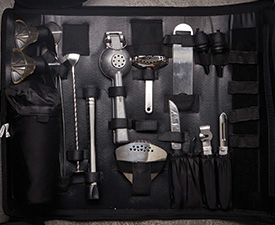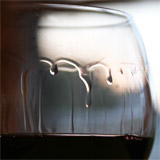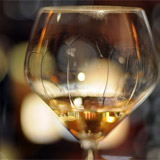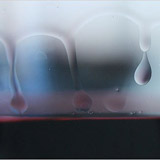On occasion you see someone swirl their glass of wine, raise it towards the light and watch with bated breath for the wine's legs to appear, a mythical indicator of wine quality. These legs, or tears as the French refer to them, are the streaks/drops of wine forming on the inside of the wine glass.
What does it mean when a wine is said to have 'legs' or someone refers to 'tears of wine'? Wine legs or tears of wine are the droplets that form in a ring on the glass above the surface of a glass of wine. The drops continuously form and fall back into the wine; you can see the effect in the shadow of the glasses of wine below.
So what causes wine legs - some think wine legs are related to the quality, sweetness or viscosity of wine, they are really indicative of the alcoholic content of the wine and are caused by the interplay between adhesion, evaporation and surface tension of water and alcohol.
The alcohol crawls up the glass as it evaporates, but since there is a film of water on top, it is pushed up in an arch. Eventually gravity wins, the water's surface tension is broken, and down runs the water, in tears. The effect is called the Marangoni or Gibbs-Marangoni Effect, in reference to Carlo Marangoni's investigations into the effect in the 1870s.
Wine legs work as capillary action draws a small amount of wine up the surface of the wine glass above the liquid. Both alcohol and water evaporate, but alcohol has a higher vapour pressure and evaporates faster, producing a region of liquid that has a lower concentration of alcohol than the rest of the wine. Alcohol has a lower surface tension than water, so lowering the concentration of alcohol raises the surface tension of the liquid. The water molecules are cohesive and stick together, forming droplets that eventually become heavy enough to fall back down the glass in streams into the wine. If you cover the glass and swirl it, wine legs eventually will stop forming because the alcohol will be unable to evaporate - no evaporation, no legs.











